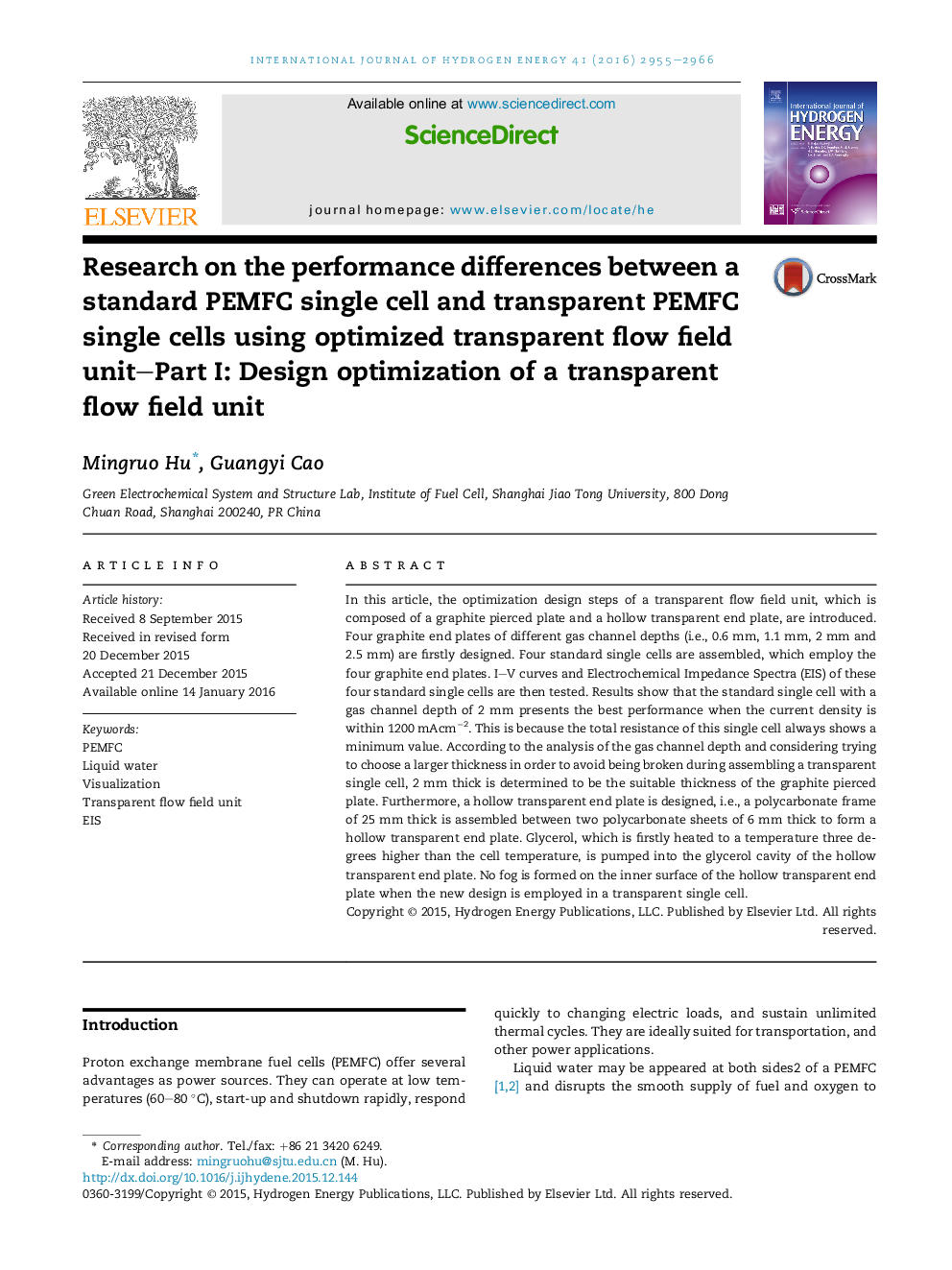| Article ID | Journal | Published Year | Pages | File Type |
|---|---|---|---|---|
| 7712362 | International Journal of Hydrogen Energy | 2016 | 12 Pages |
Abstract
In this article, the optimization design steps of a transparent flow field unit, which is composed of a graphite pierced plate and a hollow transparent end plate, are introduced. Four graphite end plates of different gas channel depths (i.e., 0.6Â mm, 1.1Â mm, 2Â mm and 2.5Â mm) are firstly designed. Four standard single cells are assembled, which employ the four graphite end plates. I-V curves and Electrochemical Impedance Spectra (EIS) of these four standard single cells are then tested. Results show that the standard single cell with a gas channel depth of 2Â mm presents the best performance when the current density is within 1200Â mAcmâ2. This is because the total resistance of this single cell always shows a minimum value. According to the analysis of the gas channel depth and considering trying to choose a larger thickness in order to avoid being broken during assembling a transparent single cell, 2Â mm thick is determined to be the suitable thickness of the graphite pierced plate. Furthermore, a hollow transparent end plate is designed, i.e., a polycarbonate frame of 25Â mm thick is assembled between two polycarbonate sheets of 6Â mm thick to form a hollow transparent end plate. Glycerol, which is firstly heated to a temperature three degrees higher than the cell temperature, is pumped into the glycerol cavity of the hollow transparent end plate. No fog is formed on the inner surface of the hollow transparent end plate when the new design is employed in a transparent single cell.
Keywords
Related Topics
Physical Sciences and Engineering
Chemistry
Electrochemistry
Authors
Mingruo Hu, Guangyi Cao,
